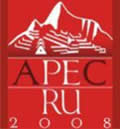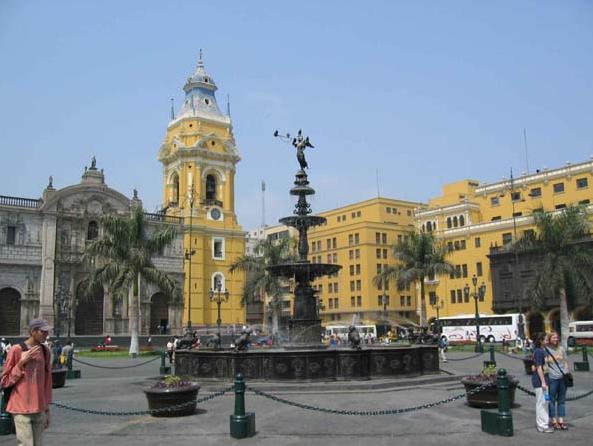United Kingdom
| Welcome |
| Peru in Brief |
| History |
| Geography |
| Government & Politics |
| Maritime delimitation between Peru and Chile |
| News |
Links |
| THE REPUBLIC | |||
|
|||
The winds of liberty that led to the independence of the United States and the fall of the French monarchy in the late 18th Century did not spare the Spanish viceroyalties in the New World . In 1821, Peru resolved to become a republic. Drafted by Manuel Perez de Tudela (later to serve as Minister of Foreign Affairs), the Declaration of Independence was read out in an open session of Lima 's town council on July 15, 1821 . Independence was proclaimed by General Jose de San Martin on the 28th of that month, but was definitively achieved by victory at Ayacucho on December 9, 1824 in the final battle for the emancipation of the Americas. |
|||
Officers and soldiers in the army of the liberator Antonio Jose de Sucre included patriots – among them Tomas Herrera , a Panamanian colonel – from all comers of Latin America . |
|||
| Most Peruvians fought in the Peruvian Legion, a battalion whose most distinguished officers were Ramon Castilla , Miguel San Roman and Narciso Tudela ; all displayed heroic conduct on the battle-field. | |||
Throughout the Republican era, Peru has sought to be one of the leading nations in Latin America in the domain of science and technology. Accordingly. South America got its first railroad when the line from Lima to Callao was opened in 1851. Begun in 1869 under the supervision of Enrique Meiggs . the rail line that winds its way across the Andes – and through Ticlio (Anticona) at 4818 m above sea level – to Huancayo is a stunning feat of engineering. In Lima , the Exhibition Palace was built on plans by A. Gustave Eiffel in 1872. |
|||
Pedro Paulet Mostajo , a Peruvian aviation visionary, developed a "torpedo plane" which NASA director Werner von Braun later acknowledged as a forerunner of the modem space rocket. Another flight pioneer, Jorge Chavez in 1910 was the first to cross the Alps in a rudimentary monoplane. In Lima in 1911, Juan Bielovucich performed the first successful takeoff in Peru . |
|||
In the field of political thought, Jose Carlos Mariategui and Victor Raul Haya de la Torre had considerable influence in Peru and the rest of Latin America through much of the 20th century. |
|||
Fernando Belaunde , who was twice president, developed a political programme based on the Inca values and included in his work "The Conquest of Peru by Peruvian people". |
|||
More recently on the international scene, Javier Perez de Cuellar served two successive terms as United Nations secretary-general. A significant number of Peruvians have gained international stature in literature and art. Painters include Francisco "Pancho" Fierro, Ignacio Merino, Francisco Laso, Teofilo Castillo, Juan Lepiani, Luis Montero, Jorge Vinatea Reinoso, Daniel Hernandez, Carlos Bacaflor, Mario Urteaga, Teodoro Nunez Ureta, Palao Berastamy and Fernando de Szyszlo. Literature is represented by Ricardo Palma, Abraham Valdelomar, Cesar Vallejo, Jose Santos Chocano, Ciro Alegria, Manuel Scorza, Mario Vargas Llosa, and Alfredo Bryce Echenique, and journalism by Oscar and Aurelio Miro Quesada. |
|||
Since achieving independence, Peru has promoted solidarity across the continent. Its government convened the Amphyctionic Congress that was held in Panama City in 1826. In 1851 on the initiative of President Ramon Castilla , Lima hosted the first Pan-American Conference. Similar events followed and eventually led to the Pan-American Union, the precursor of today's Organization of American States (OAS). |
|||
In 1969 Peru and other South American states set up the Andean Pact, a regional trade alliance officially located in Lima . Today the group comprises Bolivia, Colombia, Ecuador, Peru and Venezuela. |
|||
As elsewhere in Latin America , Peru has been a land where many people have sought refuge. Shortly before the turn of the century and after the first and second world wars, tides of migrants from Europe and Asia reached Peru, where their welcoming helped alleviate the harshness of economic conditions in the countries they had left behind. |
|||
|
|||
| <BACK> | |||






